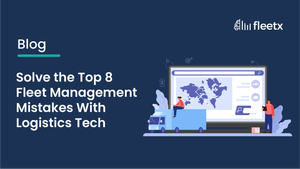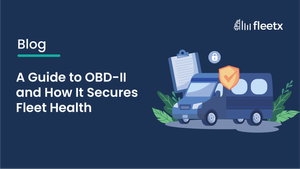
India's logistics market in 2022 has solidified its place in the global market and has grown enormously over the last eight decades, making it a draw for global market and investments. Technology-enabled and industry-specific customised services have helped the logistics sector achieve unprecedented success in recent years.
Even amidst all the chaos caused by the pandemic, the silver lining has been the central government’s push for EVs and hydrogen-based fuel to combat excessive reliance on fuel imports and decarbonize their supply chain at the same time. Through several policies focusing on building infrastructure and easing logistics issues in the country’s supply chain, the government has affirmed its commitment to the logistics sector to bring down the cost of transportation in India on par with other competing nations, including China and the United States. To start with, the union budget for the financial year 2022–23 focused greatly on infrastructure development such as roads, expressways, highways, logistics parks, and other public goods that had a positive impact for the industry. PM GatiShakti made a major push to improve multimodal connectivity and logistics efficiency, as logistics and supply chain processes in India are highly fragmented.
Major government policies and schemes
- The National Logistics Policy (NLP) was unveiled by PM Modi in September 2022 to promote seamless movement of goods across the country, while also improving the competitiveness of Indian goods in both domestic and global markets. The goal of the National Logistics Policy is to lower the cost of logistics from its current 14% of GDP to less than 10% by 2022 despite the highly fragmented nature of India's logistics industry.
- Announcement on the all-mode operators being brought under the Unified Logistics Interface Platform (ULIP) for efficient movement of goods and reducing the cost of logistics in the country.
- Expansion of by another 25,000 kilometres that has been utilising the allocated funds in 2022-23.
- Announcement regarding awarding contracts for the development of multimodal logistics parks across four key locations through the Public-Private-Partnership (PPP) and development of 100 GatiShakti Cargo terminals for multimodal logistics over three years.
- Battery Swapping Policy was proposed in the Union Budget as well as Interoperability Standards for batteries are being formulated to enable the policy.
- Increase in allocation of the PLI scheme for manufacturing of solar modules, development of the Energy Service Company (ESCO), issue of green bonds to bolster efforts to decarbonize the economy were some other key developments of 2022.
- Several key developments towards India’s Green Hydrogen Policy took place including Rs 19,744 crore allocation towards the mission to develop research, and hydrogen hubs, manufacture electrolysers, create job opportunities, attract investment, and reduce fossil fuel imports.
Key trends from 2022 for the logistics sector
India’s logistics sector will be one of the major emerging sectors in the country that boasts of creating thousands of jobs in the coming years. Employment opportunities and retaining drivers have been one of the key challenges for the sector. Thus, there is a great demand for skilled workforce that can drive commercial trucks, equipment and manage warehousing. The demand for warehousing is at an all-time high as they are currently constrained to limited locations owing to lack of skills manpower, high rent and high interest rate on raising capital presenting scope for improvement.
The logistics sector saw record investment levels in 2022 as well. Till the end of the third quarter of the year, the sector recorded an investment of Rs 8,257 crores with the result of the last quarter yet to be released. The demand for 3PL providers have also drastically increased during 2022.
Some major deals and acquisitions also took place during 2022 with one of the most talked about one being Mahindra Logistics Limited’s acquisition of Rivigo for Rs 225 crores. It marks the entry of the industry leader’s entry into 3PL logistics service. Germany’s DB Schenker is also planning its India expansion through acquisition of companies to provide end-to-end contract logistics operations and picking up a larger share of delivery contracts from e-commerce players. Major transporters and logistics operators are also expanding their footprint when it comes to technology integration in supply chain operations. Several key acquisitions of supply chain automation and solution provider companies took place during the year while others raised substantial money through funding to expand their existing operations as individual companies.
Commercial vehicles sales and figures
Despite the turbulent economy and other challenges, it has been a rather bright year for manufacturers of commercial vehicles in the country.
Automobile retail sales saw a hike of 26% to 23,80,465 units in November 2022 against 18,93,647 units in the corresponding period last year. The stats were even better for commercial vehicles that saw a 33% YoY growth to 79,369 units in November 2022 against 59,765 in November 2021. The three-wheeler and tractor retail sales saw a growth of 81% and 57% respectively as compared to the previous year. Tata Motors that is the market leader when it comes to commercial vehicles, have equipped their vehicles with advanced driver assistance systems (ADAS) , boosting the importance of vehicle-to-vehicle communications as self-driving cars become more prevalent. It will allow automobiles to communicate with other vehicles, giving them a 360-degree awareness as they drive.
A growth rate of 40% YoY of Heavy Commercial Vehicles (HCV) outshone the impressive 19% YoY growth of the Light Commercial Vehicles (LCV) due to reasons such as better availability of vehicles, festive season, bulk fleet purchases and the government’s continued push for infrastructure development.
Other Key Insights
According to the research provided by IMARC group, India’s truck market size crossed the valuation of US$ 20 Billion in 2022 and will witness a growth rate of CAGR 9% between 2023-2028. The growth will be witnessed across light, heavy and medium commercial vehicles with a demand boost from the construction and logistics sector. Trucks carry up to 70% of the domestic freight demand and heavy and medium-duty trucks (HDTs and MDTs, respectively) are responsible for most of that road transportation. Lastly, looking at key highlights from NITI Aayog and RMI’s Transforming Trucking in India report, India’s trucking market will grow 4x times by 2050, thus, there is a dire need for financing Zero Emission Trucks (ZETs) and Battery Electric Trucks (BETs), in-line with the government’s objective to decarbonise the logistics and transportation sector. Up to 40% of truck demand comes from urban areas and the demand will continue to grow as rapid urbanisation from rural to urban areas takes place across the country. Promotion of ZETs and BETs in commercial transportation can help reduce the reliance of the sector on polluting fuels like diesel and petrol and help cut the cost of fuel up to 46% over the vehicle’s lifetime.
Final Thoughts
There’s a lot to be done by the government as well as the industry in order to improve the state of India’s logistics sector. The last few years have been very significant for the growth of the sector with increasing focus on decarbonising it as well through effective policies. Our assessment requires more focus on the logistics and transportation sector in the upcoming union budget for the financial year 2023-24 that will help the objectives laid down under the ambitious National Logistics Policy unveiled earlier in 2022.







